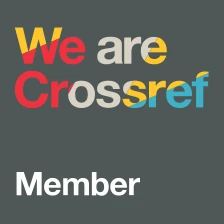Publication of issue 22 'Armed Conflicts: Migration, Trafficking, and Labour Markets'
Guest Editor: Mónica Hurtado
Editor: Borislav Gerasimov
Highly militarised and violent contexts (HMVC), like international wars, military dictatorships, armed insurgencies, or the presence of organised crime, devastate people’s livelihoods, disrupt the social order and heighten the risks of forced displacement, exploitation, and human trafficking. Academic literature and international policy documents recognise these risks, especially since the UN Security Council’s adoption of Resolution 2331(2016) on preventing and combating trafficking in the context of armed conflicts. However, their focus has largely been confined to terrorism and sexual slavery.
With over 110 million people forcibly displaced and 2 billion living in conflict-affected areas, the new Special Issue of Anti-Trafficking Review arrives at a critical time. It explores the experiences of people who flee, or choose to remain in, highly militarised and violent contexts and the links between HMVC, trafficking, and precarious migration and labour.
The first two articles reveal that people living in HMVC are not merely passive victims; they use their strengths and resources to secure safety and livelihood for themselves and their families. Luigi Achilli explores the interplay between agency and exploitation in the experiences of children associated with Boko Haram in Nigeria. Drawing on ethnographic work with young ex-combatants, he argues that acknowledging this complexity is vital for supporting the children’s reintegration and healing within communities. Similarly, Romeo Joe Quintero examines how internally displaced women and gender-diverse individuals exercised agency in the context of the 2013 Zamboanga City siege in the Philippines. He demonstrates how their agency was shaped by structural factors, such as ethnicity and religion, as well as support networks and access to information. Both authors caution that the recognition of people’s agency must not lead to their exclusion from assistance and human rights protections.
Jonathan Mendel and Kiril Sharapov discuss how the feared trafficking of Ukrainians in Europe, following Russia’s 2022 invasion, was avoided because European states promptly provided Ukrainians with the right to live, work, study, and receive social assistance in their territory. The authors also critique the depoliticisation of anti-trafficking initiatives and call for actions that promote migrants’ rights, workers’ rights, and access to welfare and counter the forms of exploitation that are normalised under capitalism. Daniel Ogunniyi presents a typology of human trafficking in the context of armed conflicts and the challenges of prosecuting non-state armed groups (NSAGs) involved in trafficking in the Sahel. He suggests that customary international law could serve as a basis for holding NSAGs accountable and proposes the adoption of an anti-trafficking ‘Deed of Commitment’.
Vanessa Maldonado and Luz Jiménez turn their attention to Mexico, which, while not technically in an internal armed conflict, is in the grips of extreme violence caused by organised crime groups and the government’s ‘war on drugs’. Highlighting the case of Victoria, a trans woman victimised by members of a drug cartel, the authors critique the Mexican ‘anti-trafficking apparatus’, which ignores victims who are not cisgender women exploited in the sex industry. Carlos Laverde analyses the dynamics of the sex trade in the context of the Colombian armed conflict. Based on interviews with unionised sex workers, he demonstrates that while sex work in conflict zones can be exploitative, it also offers women opportunities for greater profits amid the widespread disruption of traditional livelihood opportunities.
Lastly, Eloise Savill and Suzanne Hoff outline the steps that businesses can take to prevent and remedy exploitation and trafficking in their operations and value chains in countries of origin and destination for conflict-displaced workers.
One central conclusion of the Special Issue is that people living and surviving in contexts of armed conflicts do not always conform to the victim profile portrayed by popular narratives and targeted by anti-trafficking initiatives. They make decisions, undertake migration projects, join illegal armed groups, or become part of the illicit labour markets that function in conflict zones. It is crucial for decision-makers and service providers to understand these survival strategies and develop policies and practices that promote sensitive, individually-tailored support.
Finally, we emphasise that in highly militarised and violent contexts, trafficking, smuggling, exploitation, and forced migration are predictable outcomes that cannot be curbed without first tackling the underlying violence and militarisation. The international community must prevent and end all conflicts and ensure just and peaceful societies. At the same time, states must provide people escaping conflicts with ample opportunities to reach safety, as well as with social protections and labour rights in the places where they settle.
View the new issue at https://antitraffickingreview.org/index.php/atrjournal/issue/view/33



